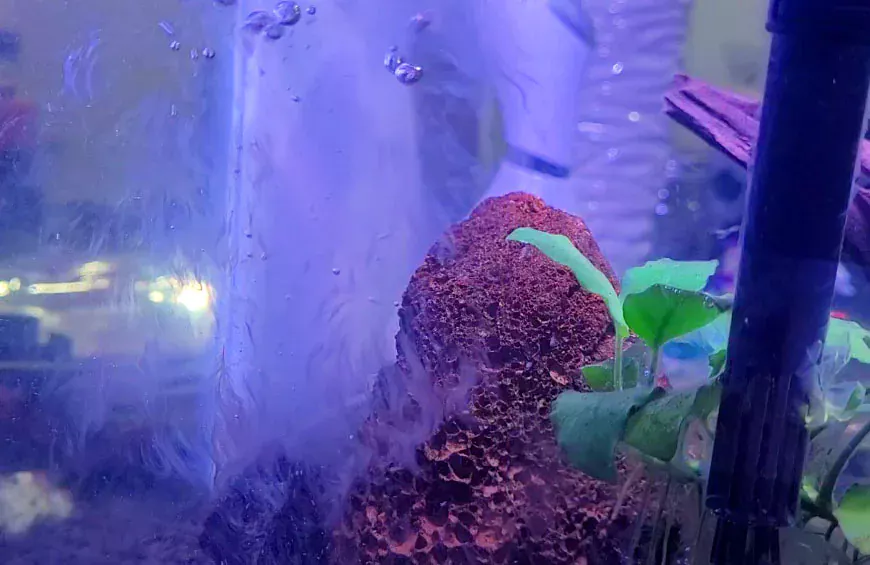Have you ever suffered the terrible experience of looking into your beloved, beautiful aquarium and realizing that the water is not clear and bright blue like it should be? Instead, the water is yellowish and full of white algae.
This article will provide you with information on what fish tank white algae is and how you can clean away the mother-of-all algae for good! There are also some tips dealing with preventing them from coming back.
- 1 What Is White Algae In Fish Tank?
- 2 What Does White Algae Look Like In A Fish Tank?
- 3 Why Is There White Algae In My Fish Tank?
- 4 How Much Time Does It Take To Remove White Algae?
- 5 How To Clean White Algae From Fish Tank?
- 6 What Fish Eat White Algae?
- 7 Does White Algae Mean My Tank Is Being Cycled?
- 8 Does Dead Algae Turn White?
- 9 Can White Algae Kill Fish?
- 10 Conclusion
What Is White Algae In Fish Tank?
White algae is a type of microalgae that attaches itself to surfaces in an aquarium. It can be found on all surfaces in the aquarium, including the glass and decorations.
It is not dangerous to fish or plants, but it can be unsightly and may cause harm if left untreated. The most common fish tank white algae is known as diatoms, which are unicellular, photosynthetic algae that live in all water bodies around the world.
What Does White Algae Look Like In A Fish Tank?
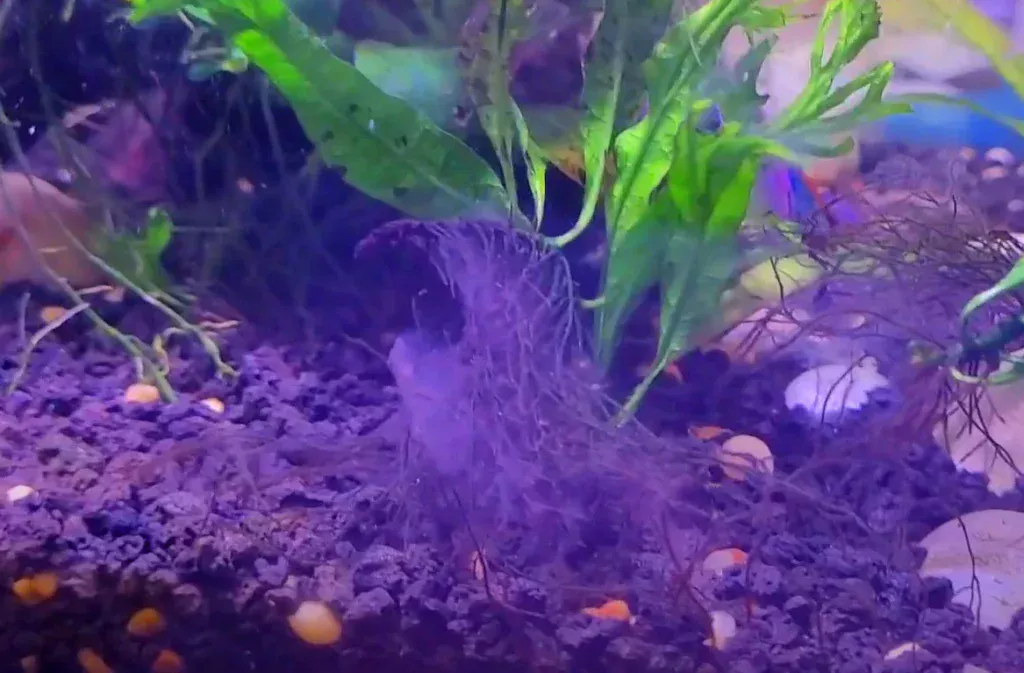
White algae tends to form a thin layer over plant leaves and rocks. It will appear as a white film on these surfaces, which can be easily wiped away with your finger or a cloth. If you don’t remove it from leaves and rocks, it will continue to grow back within a few days.
It looks like a thin coating of cotton wool when viewed through water, but when removed from objects it appears very slimy and wet. The sliminess disappears once it dries out though, leaving behind just a thin layer of cotton wool-like strands – similar to those left behind by dandruff when combed through hair!
Why Is There White Algae In My Fish Tank?
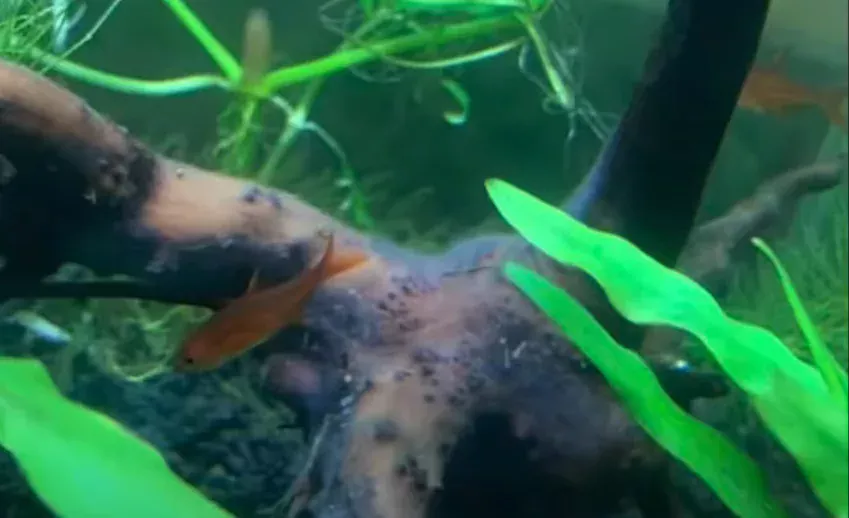
There can be many factors that cause fish tank white algae to grow. After some research I have mentioned a few of them below:
1- Improper Lighting
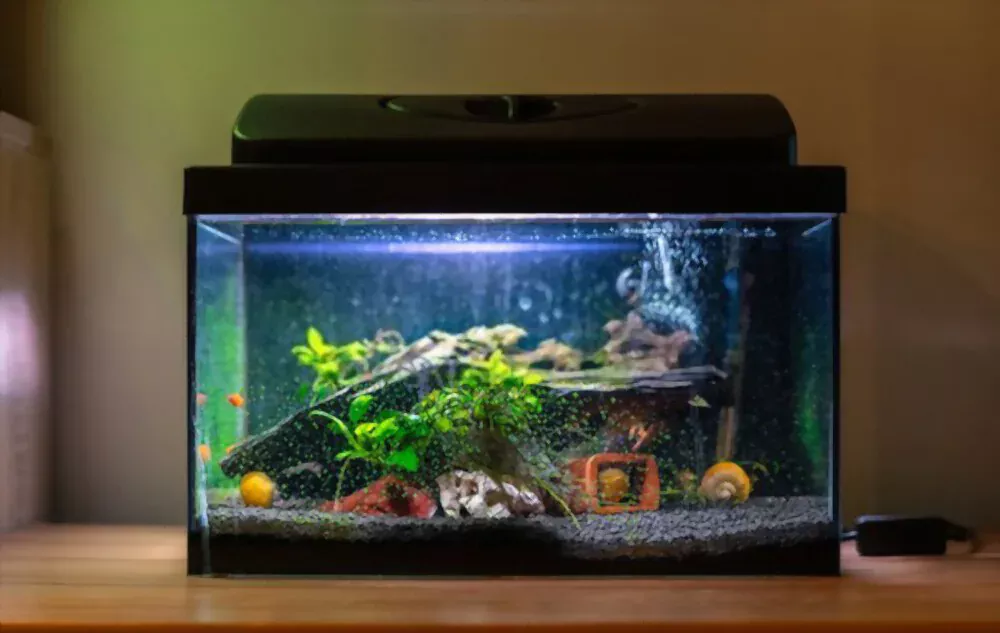
The main cause of white algae in fish tanks is improper lighting. White Algae needs light to grow, so if you have too much or too little light, it will start growing on everything it can find. If you keep your lights on 24/7, there is no chance for plants to grow which means they can’t compete with algae for nutrients.
I recommend keeping your lights on a timer so that they come on at the same time every day and then turn off at night when you want it dark for sleeping or when you go away for vacation. This will ensure that there are always plants growing during the day and competing with algae for nutrients.
If you’re using LED lights without a timer, I still recommend setting them to come on 15 minutes before sunrise each morning and then turning them off again at sunset each evening so that there are always plants growing during the day (even if just briefly).
2- Elevated Levels Of Dissolved Mineral Salts (Total Dissolved Solids)
An elevated level of minerals dissolved in water is another possible reason why there could be white algae on aquarium glass and substrate. High levels of mineral salts can cause a variety of problems including poor water clarity, reduced oxygen levels, and excessive nutrient uptake by plants and aquatic organisms that can lead to toxic conditions within the tank environment.
If you have hard water (water with elevated levels of total dissolved solids), you may need to add aquarium salt to your aquarium water until you get your Total Dissolved Solids down to acceptable levels.
3- Overfeeding Your Fish
If you are overfeeding your fish, it will cause excess nutrients to build up in the water. These nutrients include nitrogen, phosphorous, and ammonia. When these nutrients build up, they can cause algae to grow quickly and cause problems for your fish.
You should only feed your fish what is recommended on the label of the food that you are using. If you feed too much food, not only will it cause excess nutrients to build up but it will also encourage more feeding than necessary from your fish which leads us to our next point.
4- Frequent Water Changes With Tap Water
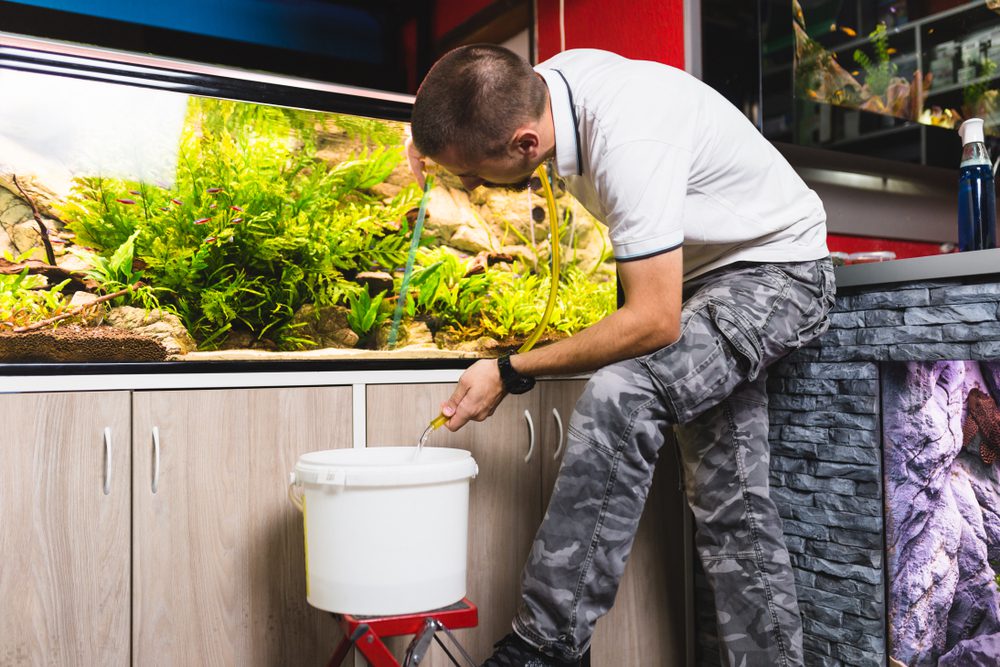
Tap water contains chlorine and chloramine which kills bacteria that are beneficial for keeping your tank clean and healthy. These chemicals also kill off nitrifying bacteria which is another reason why changing your water too often can cause fish tank white algae problems.
When you change your water make sure you use dechlorinator so that it doesn’t affect the nitrogen cycle process in your tank.
5- Presence Of Organic Waste
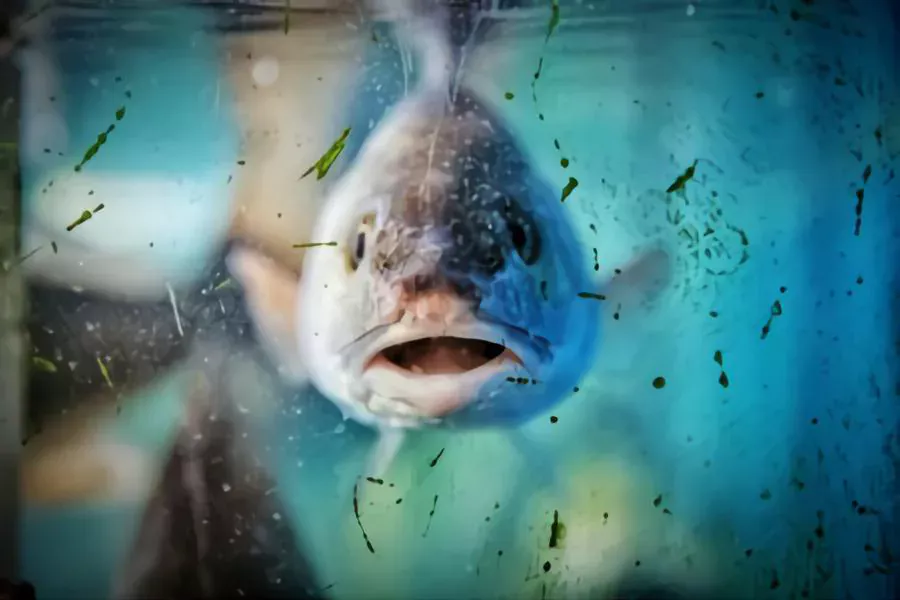
White algae thrives on organic matter that hangs around in the water, particularly dead fish and fish food. Remove any uneaten food from the tank and keep an eye on how much fish waste is accumulating at the bottom of your tank.
If there are lots of dead leaves or fallen debris, you should clean them out regularly to prevent fish tank white algae from forming.
6- Lack Of Water Movement
Water movement helps keep your tank clean by moving debris and waste from one part of the tank to another so it can be filtered out by your filter system. If there isn’t enough water movement in your tank then the organic matter will build up on surfaces like rocks or decorations where it will provide food for bacteria and will cause white algae to grow.
7- High Level Of Nitrate
This is one of the most common causes of white algae blooms in an aquarium. When there are high levels of nitrates present in an aquarium, it becomes a perfect breeding ground for this type of fungus. High levels of nitrates are usually caused by overfeeding or inadequate filtration systems.
The best way to prevent an outbreak of white algae is to ensure that your filter has enough biological capacity to handle the amount of waste produced by your fish and plants.
How Much Time Does It Take To Remove White Algae?
It depends on the size of the area you are trying to clean. However, if you have a large area that is covered with fish tank white algae, it might take you a few hours or even days to get rid of it completely.
How To Clean White Algae From Fish Tank?
White algae is a common problem in aquariums, especially those that are new or have been recently set up. It can be frustrating to deal with, but the good news is that it’s not difficult to get rid of.
Step 1:
First, clean your tank with hot water.
Step 2:
After cleaning, scrub it with a toothbrush and let it dry.
Step 3:
Now, prepare a solution of bleach (10%) and water (1:10) and dip your toothbrush into it.
Step 4:
Scrub all parts of your tank that have white algae on them using this solution.
Step 5:
Rinse off all surfaces with clean water, making sure that all traces of bleach are removed from the tank.
Step 6:
Make sure that there is no standing water left in your tank before you place your fish back into it again.
What Fish Eat White Algae?

The most common fish that eat algae are:
- Betta fish
- Cory catfish
- Siamese algae eater
I’m sure there are other small fish that also eat algae, but these are the ones I have experience with.
Betta fish are a great choice for an aquarium because they’re beautiful and very easy to care for. Bettas come in many different colors, so you can pick one that matches your decor! You can also get colored water crystals that will change the color of your betta’s fins and body.
Cory catfish are very cute little guys that love to nibble on algae. They’re very easy to care for and they don’t grow very big at all (they’ll fit into a 10-gallon tank). Corys come in many different colors too! You can even get them with spots or stripes if you want!
Siamese Algae Eaters (SAE) are another good choice for an aquarium because they’re really easy to care for and their mouths aren’t as big as some other kinds of fish (like cichlids). SAEs have really big eyes and long tails, which makes them look really cute… but don’t let their appearance fool you! They will eat just about anything in your fish tank including your plants as well.
Does White Algae Mean My Tank Is Being Cycled?
The short answer is that white algae in aquarium can mean your tank is being cycled, but it’s not a certainty.
When new aquarium owners see a whitish growth in their tank, they often assume that this means their tank has started cycling. However, this isn’t always true because white algae can appear even if there are no fish in the tank yet.
There are several types of white algae, and some of them are actually beneficial to your tank. Then there’s the stuff that isn’t so great for your tank.
Does Dead Algae Turn White?
Dead algae does turn white, but there’s a difference between dead algae and what is commonly referred to as “white algae”.
Can White Algae Kill Fish?
It’s not harmful to humans, but it can be harmful to your fish and other living things in your fish tank if left untreated, so it’s important to prevent it from happening.
In a healthy aquarium, white algae will not grow at high levels. However, if you see white or fuzzy patches on your plants, the walls of the tank, or decorations, this may be an indication that something is wrong with your aquarium water quality.
Conclusion
White algae can be an upsetting sight for aquarium owners. Unfortunately, it is usually a sign of an imbalance in your aquarium. If you try to ignore or cover it up with decorations, the problem will most likely persist and turn into a serious infestation.
It’s recommended to treat the water condition first before trying to remove the algae itself. You should also make sure that your fish are healthy as white algae may be caused due to stress from fighting or disease. Try to adjust your lights and water flow if necessary.

